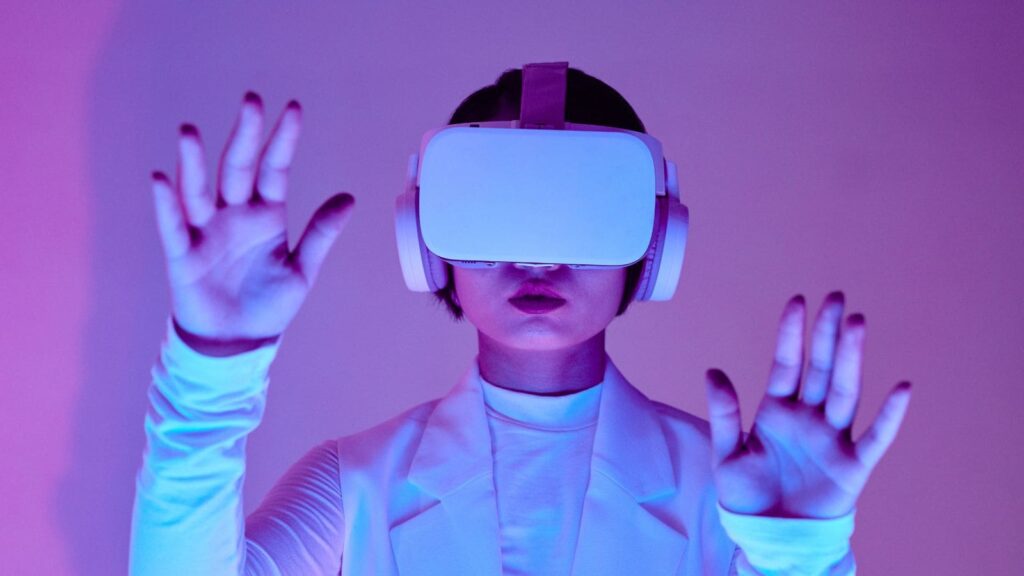By Mike Sharp
So it’s that time again: where everyone does their best Mystic Meg impression and makes predictions for what’s to come for 2023. Given the uncertain times we’re facing, this is even trickier than usual – but here goes! My predictions for the world of advertising next year…
1. Social commerce will become the norm
Social commerce is by no means a new trend for 2023, but it certainly is a growing one. As a self-proclaimed addict of wasting my time scrolling TikTok, it’s not hard to notice the sudden surge in brands selling direct, as well as influencers recreating the QVC-style of selling that I remember from my youth.
Facebook and Instagram launched their shopping function back in 2020 during the height of Covid lockdowns, while TikTok launched their ecommerce offering in late 2021 in the UK. This means that having a presence on these platforms is more important than ever, as consumers now have a direct route to purchase without even having to leave the platforms.
According to recent research by Kepios, there are now 4.74b social media users world-wide, roughly 59% of the total global population – a figure growing at 4% per year.
Another report from Junglescout shows that 48% of consumers are now willing to buy directly from TikTok – quickly catching up with Facebook (58%) and Instagram (52%). Can you afford not to take social commerce seriously in 2023?
2. Brands will increasingly capitalise on zero-party data
If you want to win in a game of marketing buzzword bingo over the next 12 months, then look no further than zero-party data. First-party data is so 2022.
The term was coined by Forrester Research in 2020, but what is it?
Essentially, it’s data that a customer has “intentionally and proactively shared with a brand”. So how is this different to first party data, and who cares?
You can get first-party data from those same customers, but instead comes from tracking their activity on your website. So first-party data helps you to understand your customers’ behaviours and get insights from their interactions, but it’s all implicit. Zero-party data instead solicits direct interaction from them. Straight from the horse’s mouth, if you will.
More and more brands are cottoning on to this opportunity to learn more about their customers, without the data privacy concerns that continue to dominate the marketing landscape.
3. There’ll be a renewed focus on conversion optimisation
Conversion optimisation? What, the practice that has been established since the early 20th century? A trend in 2023? Yes… hear me out!
We all know that the last two years (even two months!) have brought massive uncertainty, with Covid, the war in Ukraine, the energy crisis, the cost-of-living crisis, Elon buying Twitter… you get the picture. With a fear of a global recession rising as a result of this perfect storm, marketing budgets are being squeezed.
The expectations for the same advertising spend is also increasing with every pound having to work harder. This, on top of the changes in automation and Google and Co’s reliance on data, means that it is more important than ever to have the best performing website and landing pages possible. This is where conversion optimisation comes in.
Your paid media budget has to go further, but there’s little you can do about external market forces. You have to focus on the things you can control. That means getting your own house in order. Optimising your landing pages, calls-to-action, user journeys and checkout process just makes sense. Factoring that zero-party data I mentioned earlier into your decision-making will also go a long way.
I suspect 2023 will be a landmark year for conversion optimisation as uncertainty continues to influence markets, and I expect to see more companies taking it more seriously to get the results they want.
4. Video will reign supreme
Much like mobile 10 years ago, video has had its place firmly cemented on predictions lists, and this year is no different. Back in 2020, Cisco estimated that 82% of all IP traffic would account for video and almost half of all connected devices would be capable of consuming video online.
The driving force behind this rise comes from obvious sources such as YouTube and connected TVs, but also links back to the continuing growth of social platforms. Now, short-form video is more and more important. TikTok, Instagram Reels and YouTube Shorts all seeing their userbases swell, with each boasting over 1billon users. Incredibly, YouTube Shorts claims to have 15 billion views per day.
The growth of video may not be a new trend, but the low barrier to entry is now making this medium even more accessible. Successful videos no longer need to be the ones with the highest production value, but instead ones that capture the audience quickly.
We are already seeing Facebook and Instagram favour videos over static ads, and with Microsoft now partnering with Netflix to bolster its video offering, now is the time to get your video advertising strategy lined up.
5. The Metaverse is upon us
All good predictions blogs should include a bit of a longshot, like back in 2015 when I predicted the impending death of the website, due to Google’s move to keep you on entirely within its search engine. Maybe the less said the better on that one.
Anyway, The Metaverse. It’s augmented reality and virtual reality all rolled up into one immersive online experience. It sounds like something out of a sci-fi novel, but brands including Nike and Samsung have already jumped on it (or more technically, into it!).
Right now it’s a plaything for bigger brands, but like all technologies in this genre, it won’t be long before it starts to become mainstream. 2023 might be too soon for most brands to join the Metaverse, but there are many companies already offering product placements, ads and even experiences. We are a little way off from the world depicted in WALL-E, but the Metaverse is very much here.
Bonus: The Death of Twitter
This one feels too easy to have as a real trend, so let’s call it bonus content for getting this far. The ongoing circus of Twitter is all over the news right now. Whilst it has, historically, been on the bottom of the list of effective paid marketing tools (in my opinion), it is sad to see its fast-approaching demise. But could this see the rise of several interesting alternatives? Mastodon seems to be widely tipped to be the new Twitter, and could offer interesting and different marketing opportunities.
Time will tell on that one – potentially even before 2022 ends!
And there you have it. 5 and a half digital marketing trends for 2023 – and not once did we mention the death of cookies, the rise of GA4 or a privacy-safe world. Who’d have thought it?



